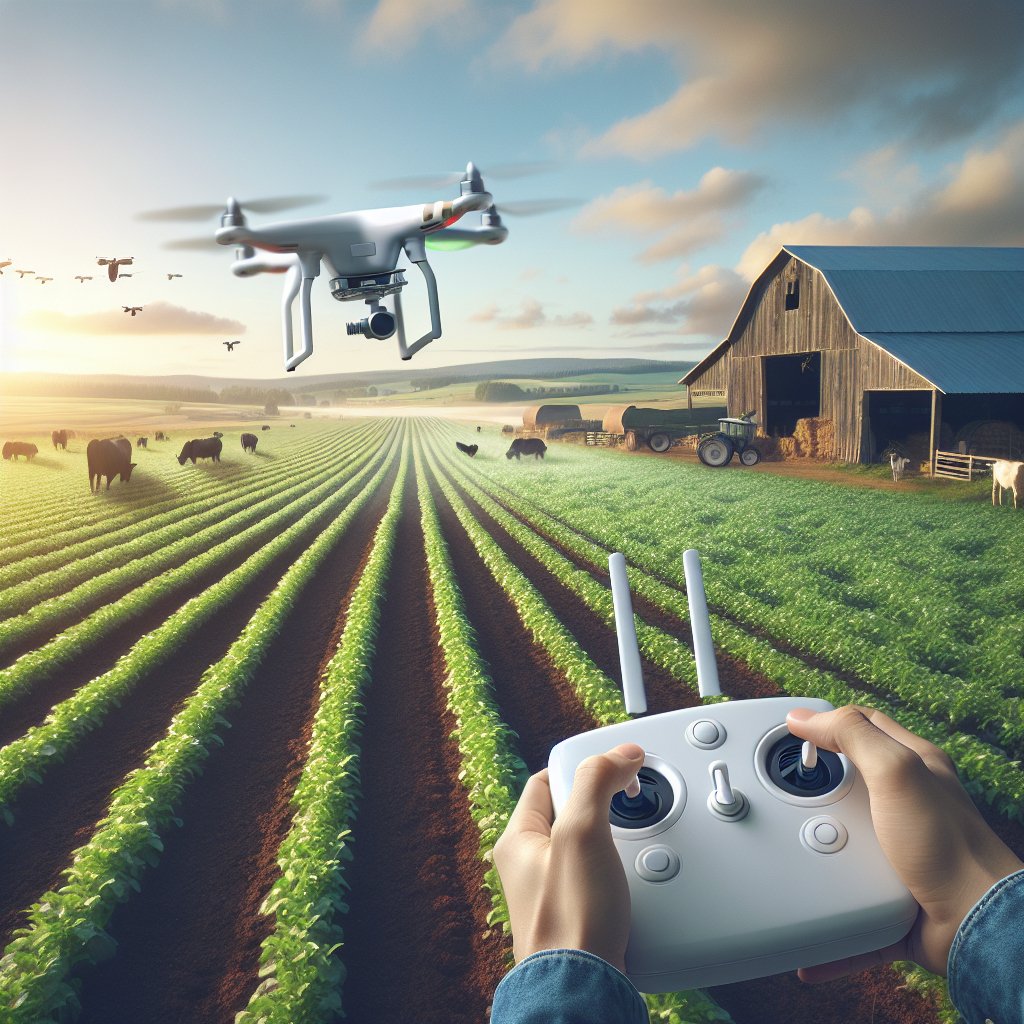In recent years, the integration of drones into agricultural practices has revolutionized farm monitoring, offering farmers a bird’s-eye view of their fields and enabling more efficient management of resources. This article explores the various ways drones can be utilized for farm monitoring, highlighting their benefits and potential challenges.
Understanding the Role of Drones in Agriculture
Drones, also known as unmanned aerial vehicles (UAVs), have become an invaluable tool in modern agriculture. They provide farmers with the ability to collect real-time data and gain insights into crop health, soil conditions, and overall farm productivity. By using drones, farmers can make informed decisions that lead to increased yields and reduced costs.
Benefits of Using Drones for Farm Monitoring
The use of drones in agriculture offers numerous advantages. One of the primary benefits is the ability to conduct aerial surveys of large areas quickly and efficiently. This allows farmers to monitor crop growth, identify areas of stress, and detect pest infestations early. Additionally, drones equipped with multispectral cameras can capture images that reveal information not visible to the naked eye, such as plant health and soil moisture levels.
Another significant advantage is the reduction in labor costs. Traditional methods of farm monitoring often require manual labor, which can be time-consuming and expensive. Drones can cover vast areas in a fraction of the time, reducing the need for manual inspections and allowing farmers to allocate resources more effectively.
Types of Drones Used in Agriculture
There are several types of drones used in agriculture, each with its own set of features and capabilities. Fixed-wing drones are ideal for covering large areas quickly, making them suitable for monitoring extensive fields. They can fly for longer durations and cover more ground compared to other types of drones.
On the other hand, multi-rotor drones are more versatile and can hover in place, making them ideal for detailed inspections and capturing high-resolution images. These drones are often used for tasks that require precision, such as monitoring specific areas of a field or inspecting individual plants.
Implementing Drone Technology on the Farm
Integrating drones into farm operations requires careful planning and consideration. Farmers need to assess their specific needs and choose the right type of drone and equipment to meet those needs. Additionally, understanding the legal and regulatory requirements for drone use in agriculture is crucial to ensure compliance and avoid potential fines or penalties.
Steps to Implement Drone Technology
- Identify Objectives: Determine the specific goals you want to achieve with drone technology, such as monitoring crop health, assessing soil conditions, or optimizing irrigation.
- Select the Right Drone: Choose a drone that meets your needs in terms of range, flight time, and sensor capabilities. Consider factors such as the size of your farm and the type of crops you are growing.
- Train Personnel: Ensure that farm personnel are trained in operating drones and interpreting the data collected. This may involve attending workshops or partnering with drone service providers.
- Analyze Data: Use software tools to analyze the data collected by drones. This can help identify trends, detect issues early, and make data-driven decisions to improve farm productivity.
Challenges and Considerations
While drones offer numerous benefits, there are also challenges to consider. Weather conditions can impact drone operations, as strong winds or rain can limit flight capabilities. Additionally, the initial investment in drone technology can be significant, although the long-term savings and increased efficiency often justify the cost.
Farmers must also stay informed about evolving regulations regarding drone use. In many countries, there are specific rules governing where and how drones can be flown, and obtaining the necessary permits and licenses is essential.
Conclusion
The use of drones for farm monitoring is transforming the agricultural industry, providing farmers with powerful tools to enhance productivity and sustainability. By understanding the benefits and challenges of drone technology, farmers can make informed decisions and leverage this innovative tool to optimize their operations. As technology continues to advance, the role of drones in agriculture is likely to expand, offering even more opportunities for growth and efficiency in the future.



